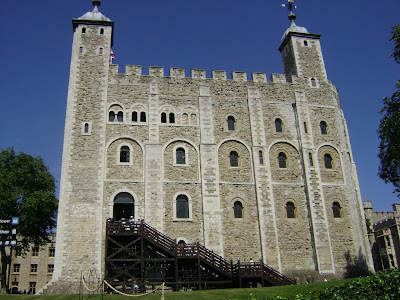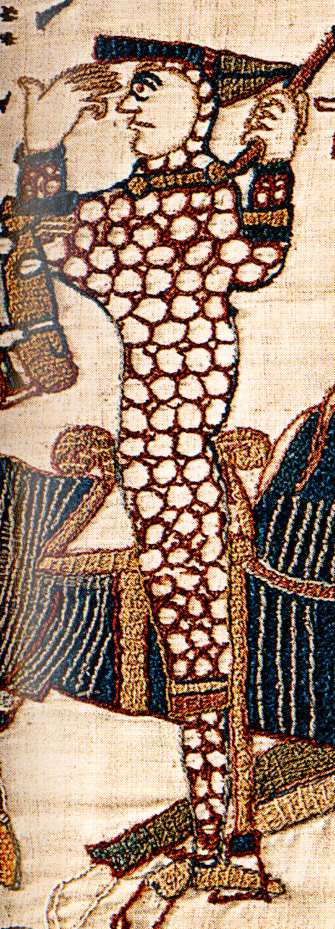 |
| The White Tower (Tower of London) |
Right, you've been warned!
I'm writing from sunny Kent, England. It's a lovely place and provides an excellent jumping point into London where I visited the Tower of London a few days back. While I was there I got to see the famous White Tower and feed my macabre historical interests, such as plague, torture, and the death of William the Conqueror.
 |
| The tower has three square turrets and one round. Centuries later, the round one was used as England's first observatory. |
William is something of a legendary character, and one that we all know well for his achievements at Hastings in 1066. Saga rightly sees this conquest as a seminal event, representing the game's historic tuning point. However, William's achievements span his lifetime and are really interesting stories unto themselves. But what I was interested in was how was this great man finally brought down?
 |
| Not of Norman origin, but still scary looking! |
The king always fought personally in his battles as he was a sort of hands-on warrior-king. In fact, in 1087 William was on campaign against his son, Robert, and the French king in France when he captured and sacked the town of Mantes. During the pillage William's horse was spooked by a sudden raging fire and reared up. William came down hard on the iron of his saddle and was severely injured. His army paused its advance as the king was rushed to Rouen to seek help, both spiritual and medial, from the local church there. The friars found that he was pissing blood, and forecast the king's imminent death. William got his affairs in order and then died 10 days later on 9 September 1087.
 |
| William I |
The fact that he was a fully mobile and active king on the battlefield (propaganda notwithstanding) and the fact that he took 10 days to 'pop his clogs' (as my Kiwi friends put it), suggest a much more painful end (if that's possible). The iron most likely smashed in his urethra, which infected the region, and soon became necrotic and gangrenous. Left untreated properly, death was guaranteed within 10-20 days.
So there you have it: one of the greatest conquerors of all time, brought down by a kick to the privates. Think of William the next time you play a good ol' game of Roshambo.
Brewer believes that William's obesity wasn't that at all, but rather an intestinal obstruction. Such afflictions have the tendency to make a person look quite fat, but the swelling is entirely due to that and is not actual body fat.
The swelling carried on after William's death to such a point that they couldn't fit the body into the coffin during his funeral. As they forced him into the small box, the body exploded inside the church. Fleshy bits of the conqueror were strewn about and the vile stench of the intestinal obstruction filled the room. The service was quickly conducted and then some poor bastards had the job of scooping up the conqueror and putting all of his bits into the coffin, which he now fit into with no problems.
Cool, eh? Told you not to eat 'n read...
We're off to see the battlefield of Hastings in a couple of days, so I'll take some pictures and bang out another article sometime soon (time permitting!). In the meantime, try not to kick anyone in the nuts. It might actually be the death of them!
Regards from Kent,
Mike
PS: Brewer's book is quite interesting. Here's more information if you are interested in reading more:
The Death of Kings: A Medical History of the Kings and Queens of England















